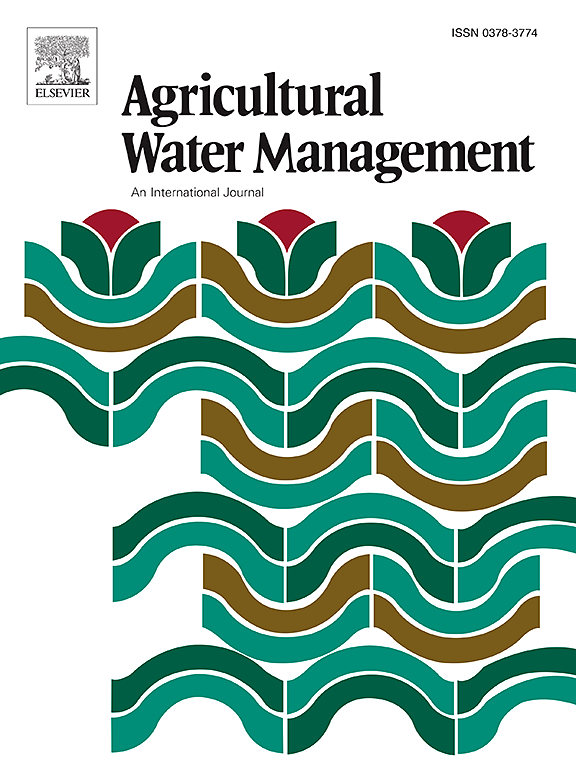Effects of increasing maize planting density on yield, water productivity and irrigation water productivity in China: A comprehensive meta-analysis incorporating soil and climatic factors
IF 6.5
1区 农林科学
Q1 AGRONOMY
引用次数: 0
Abstract
Increased planting density (IPD) has been widely implemented, yet its impact on maize yield, irrigation water productivity (IWP), and water productivity (WP) remains unclear. Utilizing data sourced from peer-reviewed publications, we conducted a meta-analysis to (1) examine the effects of varying planting densities on maize yield, (2) further investigate the influence of soil properties and the climate-whether dry or wet-on maize yield, IWP, and WP across increasing maize planting densities, and (3) assess the effects of fertilizer application on maize yield, IWP, and WP across increasing maize planting densities. The results showed that increasing planting density was effectively increased the total maize yield by about 13.3 %, IWP by about 16.7 % and WP by about 7.9 %. Soil type and wet/dry conditions also significantly affected maize, with the highest yield increase in silty (30.2 %) and dry semi humid (13.6 %), WP in (loamy: 18.7 %) and dry semi humid (15.7 %), and IWP in loamy (30.3 %) and semi arid (17.8 %). Therefore, in our study, we recommended the following for maize production practices in China: the best soil type for maize cultivation is recommended to be silty, the climate type is dry semi-arid; the recommended planting density is recommended to be 75,000–90,000 plants·ha−1, with irrigation ranging from 200 to 400 mm irrigation, 200–300 kg·ha−1 of nitrogen fertiliser, and 200 kg·ha−1 or more of phosphorus and potash fertiliser to maximise yield. This research highlights the strategic importance of tailored planting and irrigation practices for sustainable maize production and offers practical guidance for farmers and policymakers.
增加玉米种植密度对中国玉米产量、水分生产力和灌溉水生产力的影响——基于土壤和气候因素的综合meta分析
增加种植密度(IPD)已被广泛实施,但其对玉米产量、灌溉水分生产力(IWP)和水分生产力(WP)的影响尚不清楚。利用来自同行评审出版物的数据,我们进行了一项荟萃分析,以(1)检验不同种植密度对玉米产量的影响,(2)进一步调查土壤性质和气候(无论是干燥还是潮湿)对玉米产量、IWP和WP的影响,以及(3)评估肥料施用对玉米产量、IWP和WP的影响。结果表明,增加种植密度可有效提高玉米总产量约13.3 %,IWP约16.7 %,WP约7. %。土壤类型和干湿条件对玉米产量也有显著影响,其中粉质玉米产量增幅最大(30.2% %)和干燥半湿润玉米产量增幅最大(13.6% %),壤土玉米产量增幅最大(18.7 %)和干燥半湿润玉米产量增幅最大(15.7 %),壤土玉米产量增幅最大(30.3 %)和半干旱玉米产量增幅最大(17.8 %)。因此,本研究建议中国玉米生产实践的最佳土壤类型为粉质土壤,气候类型为干燥半干旱;建议种植密度为75,000-90,000株·ha - 1,灌溉面积为200 - 400 mm,氮肥200 - 300 kg·ha - 1,磷肥和钾肥200 kg·ha - 1或更多,以实现产量最大化。这项研究强调了量身定制的种植和灌溉方法对可持续玉米生产的战略重要性,并为农民和决策者提供了实用指导。
本文章由计算机程序翻译,如有差异,请以英文原文为准。
求助全文
约1分钟内获得全文
求助全文
来源期刊

Agricultural Water Management
农林科学-农艺学
CiteScore
12.10
自引率
14.90%
发文量
648
审稿时长
4.9 months
期刊介绍:
Agricultural Water Management publishes papers of international significance relating to the science, economics, and policy of agricultural water management. In all cases, manuscripts must address implications and provide insight regarding agricultural water management.
 求助内容:
求助内容: 应助结果提醒方式:
应助结果提醒方式:


